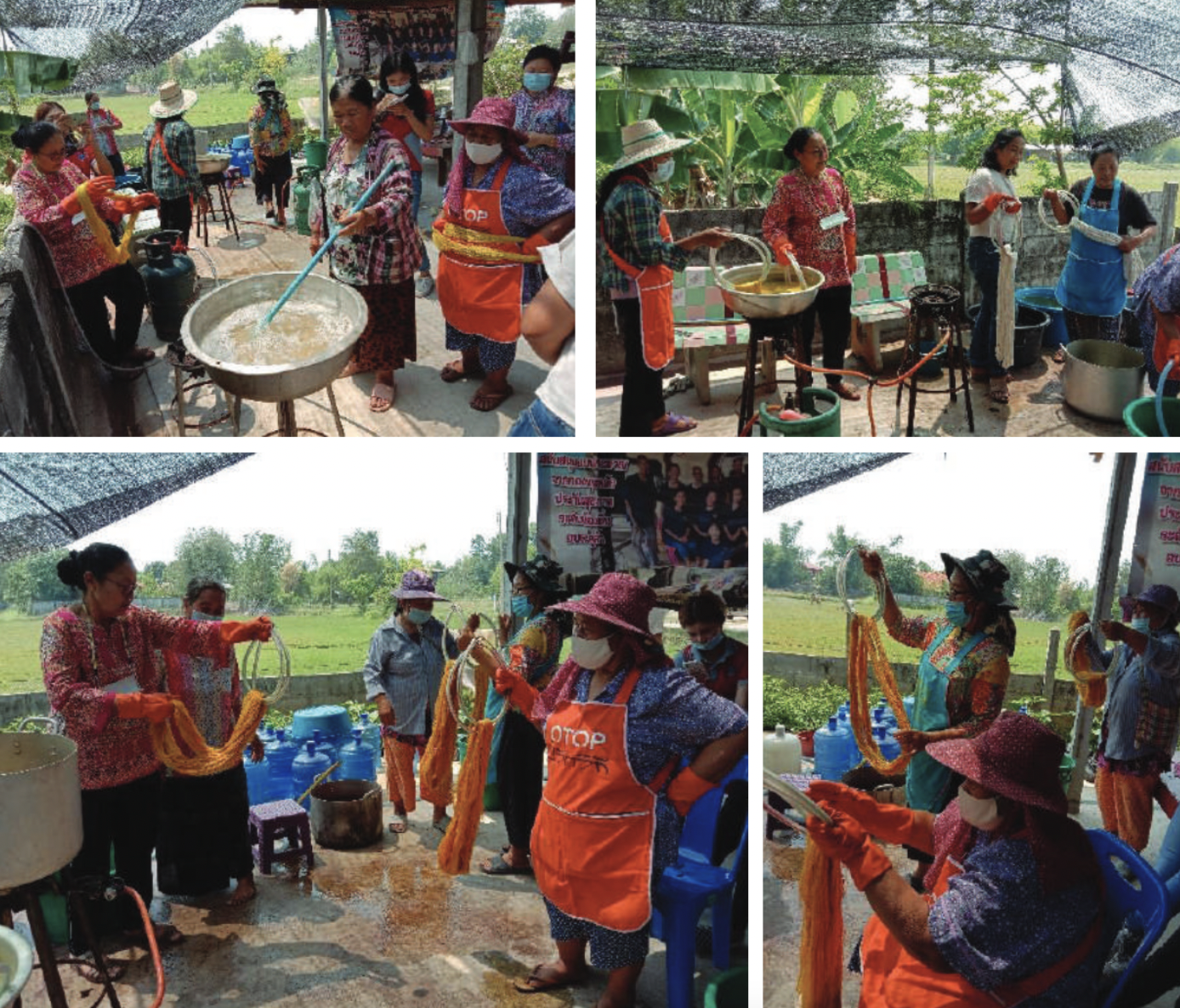Woven fabrics colored with natural pigments: Innovation for sustainable community Sam Sung subdistrict, Khu Kham district, Khon Kaen
Main Article Content
Abstract
The community lifestyle of Sam Sung subdistrict, Khu Kham district, Khon Kaen province is identical to the Thai concept of weaving as a way of life passed down from generation to generation. There is a rich lineage of the craft of weaving, which preserves the community’s individuality. The majority of the group’s members are elderly women who have been fi nished from farming and other forms of agriculture in order to create hand-woven cotton silk, which provides an additional 1,000-2,000 baht per month for their families. The textiles are woven in 2 x 2 meter and 2 x 4 meters sizes per piece, as well as scarves. As chemical colors are readily available, woven cotton silk is frequently colored with them. It is straightforward to make and obtain the desired hue, withstanding the tendency toward environmental preservation and optimal utilization of natural resources. Therefore, weaving using natural dyes has had a signifi cant impact on the Thai textile sector. Therefore, when the group learned from the experts of Mahasarakham University how to use natural materials to color fabric, it was a signifi cant step forward. Organized training sessions with group members and collaboratively developed new and gorgeous cotton silk dyes. Additionally, it does not harm the environment. It is a product called “Natural Colored Clothes” that adds value to the cotton silk products that the business previously manufactured. It can earn roughly twice as much revenue as its predecessor and expand internet marketing channels. (Online Marketing) increases the number of customers. In addition, the Ban Khu Kham Hand-Woven Fabric Group intends to collaborate with the University to diversify product processing in the future. Such include purses, hats, clothing, work attire, key chains, and hairpins. This will ensure the ongoing viability of Ban Khu Kham’s hand-woven cloth group.
Article Details

This work is licensed under a Creative Commons Attribution-NonCommercial-NoDerivatives 4.0 International License.
All authors need to complete copyright transfer to Community University Engagement Journal prior to publication. For more details click this link: copyright & license
References
Benjapa So-Ubol. (2010). An examination of the break-even and return rates of hand-weaving fi rms, community enterprises, professional organizations, weaving villages, and pontoons. District of Muang, Udon Thani Province. Journal of Research and Development, Loei Rajabhat University, 5(3), 25-34.
Boontawee, K. (2022). Guidelines for the transfer of Bhumanya silk weaving to the younger generation of the silk weaving group, Kabin Subdistrict, Kud khao pun District, Ubon Ratchathani. Human and Social Sciences Journal Ubon Ratchathani Rajabhat University, 13(1), 139-254.
Budsali, P. (2022). Analysis of the cost, return, and fi nancial ratios of muddy silk weaving in the Ban Mab-Samor Community of Amphoe Muang, Buriram Province. The Journal of the Scientifi c Community, 16(3), 111-123.

